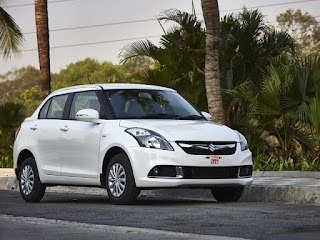Taxi GPS traces
Taxi GPS traces
Taxi GPS traces are valuable resources to investigate taxidrivers’ service behaviors. In this paper, we have studied thetaxi drivers’ service strategies based on the activities of thou-sands of taxi drivers revealed in a real-life large-scale taxiGPS data set collected from 7600 taxis in Hangzhou, aimingto provide useful guidance to taxi drivers. To understand thebehaviors of a taxi driver, we first propose to separate the taxiGPS traces of each pair of shared taxi drivers based on twoobservations: 1) The shift handover location and time are moreor less fixed on most days; 2) the taxi generally stops for awhile in the shift handover location and shift handover timeslot for handover, with vacant status before and after the shifthandover event. We then convert each taxi delivery distance intocorresponding taxi revenue in each time slot and find that mostof the taxi drivers do not perform consistently well across dif-ferent time slots. Thus, we have proposed to study taxi drivers’behaviors in each time slot rather than on a daily basis.In this paper, we have proposed to model the taxi driver’sservice strategies from three perspectives, namely, passenger-searching strategies, passenger-delivery strategies, and service-area preference. We further represented the service strategiesusing a feature matrix. In order to accurately identify thepassenger-searching strategies, we derived a method to learn theinitial intention of taxi drivers right after each drop-off event
Sri Siva Sakthi Travels

Through measuring the correlation between each service strat-egy and the corresponding revenue, we reveal the efficient andinefficient strategies in each time slot and location. Generallyspeaking, it is found thathuntingis usually more efficient thanwaitingin order to find passengers locally, with a few excep-tions, such as in the airport where people go to fixed places totake taxis.Going distantbecomes a preferable service strategywhen a taxi drops off passengers in the suburb area, where taxisusually spend less time on average finding the next passengersby moving from nonhot areas to hot ones. The correlation of thetaxi average passenger-delivery speed and the revenue showsthat, when the traffic becomes congested at busy time slots,choosing the light-traffic route increases the driver’s revenue.We also found that some service areas are more profitable thanothers for taxi drivers in different time slots of the day.Taxi service strategies are key factors influencing the taxidrivers’ revenue. Based on the extracted historical servicestrategies, we predict the performance of a taxi driver with asupport vector regression method. We obtain a residual of lessthan 2.35 RMB/h, suggesting that the extracted taxi servicestrategies with our proposed approach well characterize thedriving behavior and performance of taxi drivers.In the future, we plan to broaden and deepen this workin two directions. First, we plan to conduct further researchin characterizing subtle features of the taxi service behaviorsand strategies and to understand the human decision-makingprocess. Second, we attempt to explore the appropriate waysthat provide more concrete instructions to taxi drivers accordingto the taxi service strategies.https://srisivasakthitravels.com/
https://goo.gl/maps/1rNVoifRFQ9snSor6
Taxi GPS traces are valuable resources to investigate taxidrivers’ service behaviors. In this paper, we have studied thetaxi drivers’ service strategies based on the activities of thou-sands of taxi drivers revealed in a real-life large-scale taxiGPS data set collected from 7600 taxis in Hangzhou, aimingto provide useful guidance to taxi drivers. To understand thebehaviors of a taxi driver, we first propose to separate the taxiGPS traces of each pair of shared taxi drivers based on twoobservations: 1) The shift handover location and time are moreor less fixed on most days; 2) the taxi generally stops for awhile in the shift handover location and shift handover timeslot for handover, with vacant status before and after the shifthandover event. We then convert each taxi delivery distance intocorresponding taxi revenue in each time slot and find that mostof the taxi drivers do not perform consistently well across dif-ferent time slots. Thus, we have proposed to study taxi drivers’behaviors in each time slot rather than on a daily basis.In this paper, we have proposed to model the taxi driver’sservice strategies from three perspectives, namely, passenger-searching strategies, passenger-delivery strategies, and service-area preference. We further represented the service strategiesusing a feature matrix. In order to accurately identify thepassenger-searching strategies, we derived a method to learn theinitial intention of taxi drivers right after each drop-off event
Sri Siva Sakthi Travels
Through measuring the correlation between each service strat-egy and the corresponding revenue, we reveal the efficient andinefficient strategies in each time slot and location. Generallyspeaking, it is found thathuntingis usually more efficient thanwaitingin order to find passengers locally, with a few excep-tions, such as in the airport where people go to fixed places totake taxis.Going distantbecomes a preferable service strategywhen a taxi drops off passengers in the suburb area, where taxisusually spend less time on average finding the next passengersby moving from nonhot areas to hot ones. The correlation of thetaxi average passenger-delivery speed and the revenue showsthat, when the traffic becomes congested at busy time slots,choosing the light-traffic route increases the driver’s revenue.We also found that some service areas are more profitable thanothers for taxi drivers in different time slots of the day.Taxi service strategies are key factors influencing the taxidrivers’ revenue. Based on the extracted historical servicestrategies, we predict the performance of a taxi driver with asupport vector regression method. We obtain a residual of lessthan 2.35 RMB/h, suggesting that the extracted taxi servicestrategies with our proposed approach well characterize thedriving behavior and performance of taxi drivers.In the future, we plan to broaden and deepen this workin two directions. First, we plan to conduct further researchin characterizing subtle features of the taxi service behaviorsand strategies and to understand the human decision-makingprocess. Second, we attempt to explore the appropriate waysthat provide more concrete instructions to taxi drivers accordingto the taxi service strategies.https://srisivasakthitravels.com/
https://goo.gl/maps/1rNVoifRFQ9snSor6



Comments
Post a Comment